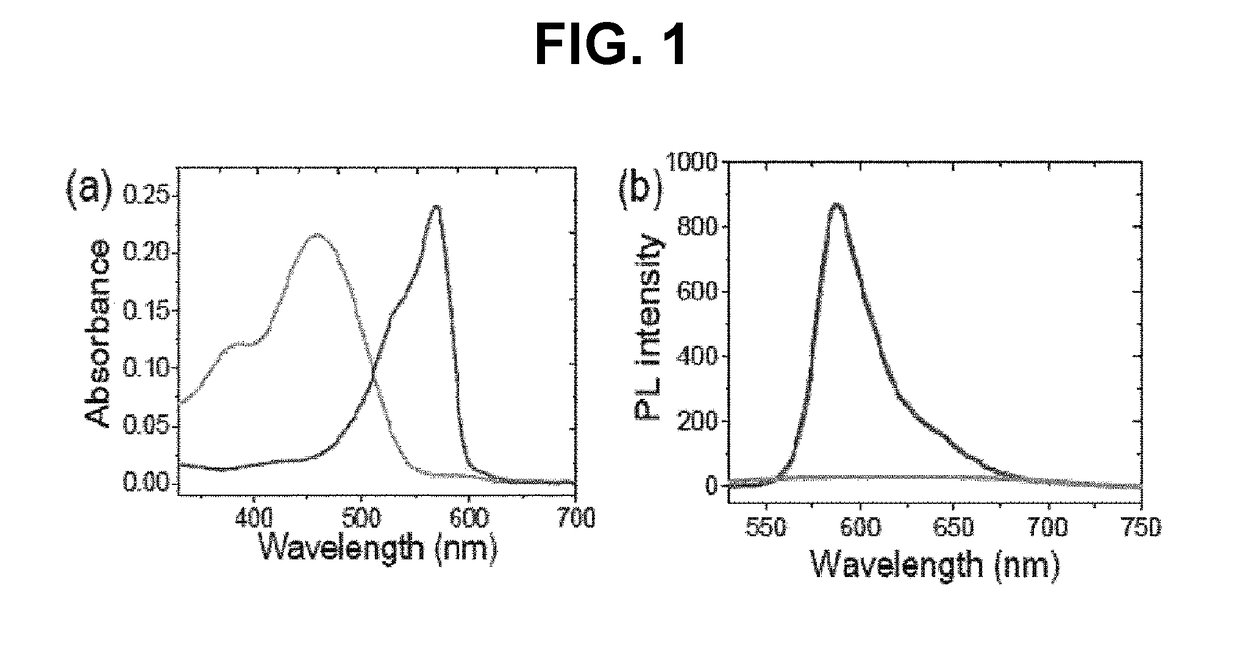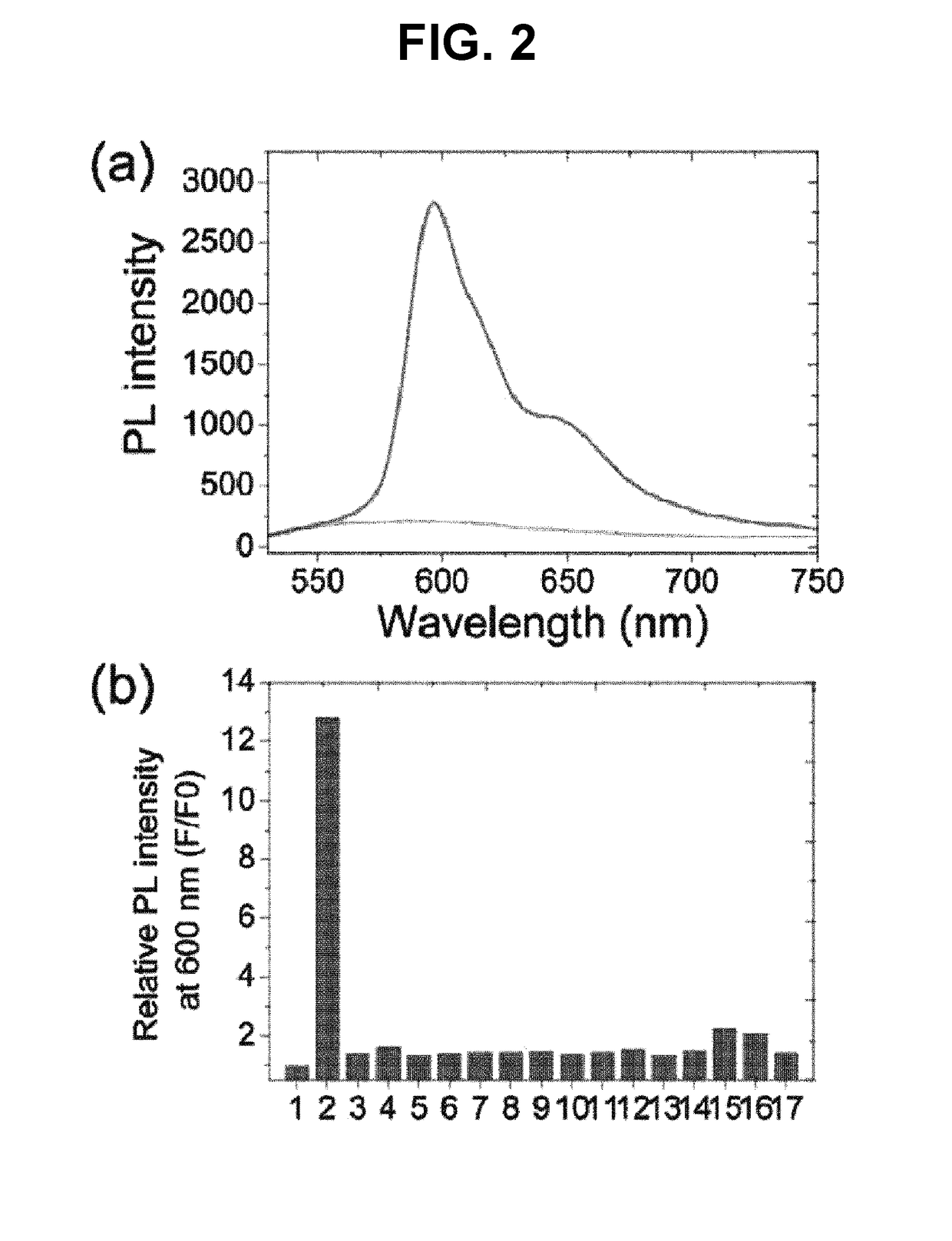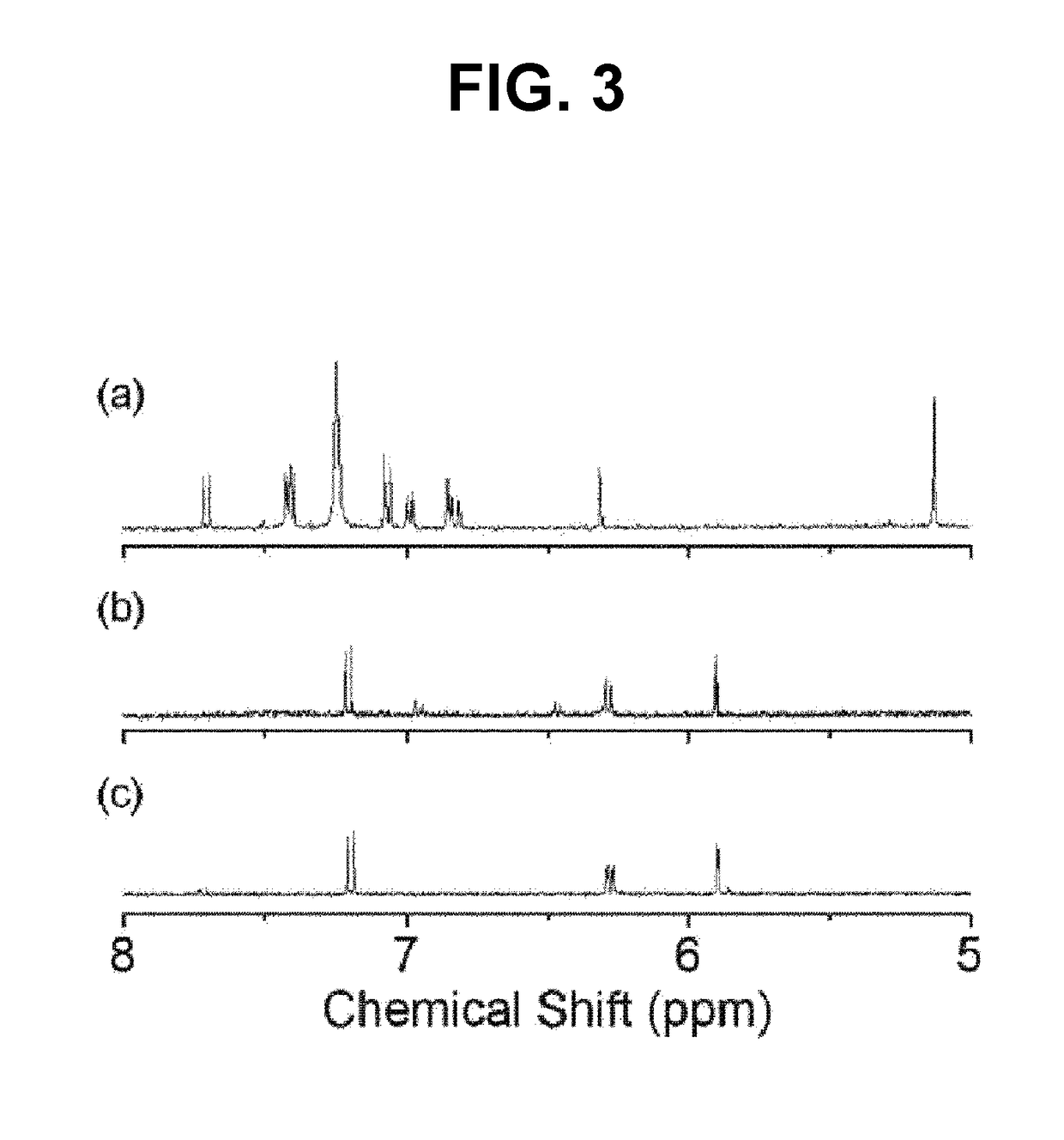Reactive fluorogenic compound and nanocomposite for sensing hydrogen sulfide comprising the same
a fluorogenic compound and nanocomposite technology, applied in the field of nanocomposite for detecting hydrogen sulfide, can solve the problem that the reaction between a hydrophobic fluorogenic probe and a hydrophilic sensor in an aqueous environment was not effectively improved, and achieve the effect of more sensitive detection
- Summary
- Abstract
- Description
- Claims
- Application Information
AI Technical Summary
Benefits of technology
Problems solved by technology
Method used
Image
Examples
example 1
of ABR
[0095]Resorufin (50 mg, 0.145 mmol) and K2CO3 (40 mg, 0.29 mmol) were dissolved in DMF (4 mL) and stirred at room temperature under an argon atmosphere. After the solution color changed to dark purple, 4-azidobenzyl bromide (61.5 mg, 0.29 mmol) dissolved in DMF (1 mL) was added dropwise to the stirred solution. The reaction mixture was stirred at 50° C. for 3 hours. After cooling to room temperature, the reaction mixture was poured into brine and extracted with ethyl acetate two times. The organic layer was separated and dried over anhydrous MgSO4. The solvent was evaporated at reduced pressure, and the residue was purified by column chromatography on silica gel with ethyl acetate / n-hexane 1:1 (v / v). ABR (35 mg) was obtained as an orange solid in 70.3% yield.
[0096]1H NMR (400 MHz, CDCl3, δ): 7.72-7.70 (d, J=8.8 Hz, 1H), 7.42-7.39 (m, J=8.4 Hz and 10.0 Hz, 3H), 7.07-7.05 (d, J=8.4 Hz, 2H), 6.99-6.97 (dd, J=8.8 Hz and 2.8 Hz, 1H), 6.86-6.85 (d, J=2.4 Hz, 1H), 6.84-6.81 (dd, J=10...
example 3
Co-Surfactant on Polarity of Composite
[0103]In order to apply the water-insoluble ABR to aqueous physiological media, it was formulated into a water-dispersed nanoreactor probe (nanoABR), as depicted in Example 1 and Comparative Example 1 or 2. As shown in FIG. 4a, nanoABR is a nano-scale molecular composite that is composed of DSPE-PEG and 1-iodooctadecane with or without a co-surfactant, and loaded inside with ABR. Prior to optimization of the nanoreactor probe, the nanoscopic polarity effect on the sensing reactivity of the embedded ABR was evaluated. Specifically, as in Example 2, and Comparative Examples 1 and 2, surfactants for co-assembly were selected among differently charged materials, such as cationic SKC (Example 2), neutral F127, and anionic SDS. Through such additional surfactants, i.e., co-assembly including co-surfactants, the interface between the hydrophobic core surface of nanoABR and the surrounding medium was allowed to be differently charged to impose different...
example 5
Cell Labeling and Imaging
[0108]A human cervical epitheloid carcinoma (HeLa) cell line was maintained in DEAM with 10% FBS, L-glutamine (5×10−3 M), and gentamicin (5 μg mL−1), in a humidified 5% CO2 incubator at 37° C. The cells were seeded onto 35 mm culture dishes and allowed to grow until 70% confluence. Prior to the experiment, cells were washed twice with the PBS buffer (pH 7.4) and then incubated in serum-free medium (1.9 mL) containing a nanoABR dispersion solution (100 μL). For endogenous sulfide imaging, cells were pretreated for 30 minutes in a serum-free medium containing sodium nitroprusside (SNP, 100 μM). For an inhibition test, cells were pretreated with DL-propargylglycine (PAG, 100 μM) for 30 minutes. The pretreated cells were washed twice with the PBS buffer (pH 7.4) to remove free nanoparticles just before the data acquisition, and subjected to microscopic imaging with a LEICA DMI3000B microscope equipped with a Nuance FX multispectral imaging system (CRI, USA).
[010...
PUM
 Login to View More
Login to View More Abstract
Description
Claims
Application Information
 Login to View More
Login to View More - R&D
- Intellectual Property
- Life Sciences
- Materials
- Tech Scout
- Unparalleled Data Quality
- Higher Quality Content
- 60% Fewer Hallucinations
Browse by: Latest US Patents, China's latest patents, Technical Efficacy Thesaurus, Application Domain, Technology Topic, Popular Technical Reports.
© 2025 PatSnap. All rights reserved.Legal|Privacy policy|Modern Slavery Act Transparency Statement|Sitemap|About US| Contact US: help@patsnap.com



